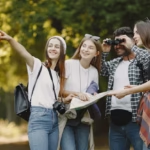The narrow range of the subjects of prehistoric art, that of animal life and its fecundity, as well as the remoteness and inaccessibility of many of the cave paintings, sculpture and engravings that have been discovered, suggest that the artworks were not ‘art for art’s sake’ and were therefore produced purely for decoration. Prehistoric men and women had more relevant reasons for producing artwork. Some of the reasons for its creation are:
1. A means of survival
2. A form of magic to overcome animals that endanger his life
3. A form of ritual and worship
4. Teaching tools for amateur anglers
5. Record information and tell stories
6. Fertility magic
• As a means of survival
The predominance of animals in the various prehistoric arts, and therefore paintings, sculpture, engravings and pottery indicate the importance of animals in those societies. In fact, the survival of the men and women in the cave relied heavily on the animals. The representation of images of animals in painting, engraving, and sculpture was a form of magic or witchcraft that ensured successful hunting of wild and ferocious animals in deep caves and dense forests. The points below show how hunted animals were used to meet the basic necessities of life by prehistoric men and women:
1. The fleshy parts or meat of caught animals were eaten as food.
2. The outer coverings or skins of animals, feathers of large birds, and fur of mammals were worn over the body as a form of cloth for protection against harsh weather or weather conditions.
3. Fat and marrow obtained from animals were used as fuel in lamps produced from stone or clay.
4. Animal fat and blood were used to produce colored pigments and binders for colored rocks.
5. Animal bones were used to produce simple weapons for hunting activities and as palettes for mixing paints.
6. Apart from the caves which served as the primary shelter for the cave men and women, they also made tents from animal skins and huts from mud, plant fibres, stone and bone.
• As a form of magic to overcome animals that endanger his life
Prehistoric men were hunters and largely depended on animals for their survival.
However, most of these animals were ferocious and wild. Hunting these animals was very risky as they hunt these animals with simple weapons, tools or tools. As a result, prehistoric men and women resorted to a type of practical magic known as sympathetic magic or hunting magic. This hunting magic was based on the caveman’s belief that there was a bond or close connection between an object and its image. Therefore, anything done to the drawn image is believed to affect the spirit of the living animal.
To achieve this, the caveman deliberately omitted some sensitive parts from the images of the animal to be hunted, such as the eyes, ears, and nose. It was believed that this prevented the living animal from seeing, hearing or smelling the caveman’s presence on the eve of the hunt. Sometimes, arrows were pierced into the bodies of the images. The caveman believed that this would eventually render the animal incapacitated or injured leaving it under its control. Sympathetic magic was the guarantee of success in capturing or killing the animal. New or new boards were made to chase another day. This gave rise to numerous cave paintings, engravings, and sculpture.
• As a form of ritual, worship and ritual
Images of animals enclosed on the roofs or walls of caves are believed to be objects of worship on which rituals are performed for success in hunting activities. It is believed that special dances were performed around the images to catch a good day. During the initiation ceremonies for the young people who lived in those communities, images of animals were used in the rituals.
• As educational tools for amateur fishermen
Pictures of animals served as teaching aids to teach new hunters the nature of the different species they would meet when they were engaged in a hunt. It has been asserted that experienced cave hunters may have used the images to indicate parts of each type of animal to be targeted with spears by the first timers so that hunting would not be such a daunting task for them.
• As a way to record information and tell stories
Paintings and engravings of a group or herd of animals were used to record animal migrations over the past seasons. It is believed that some animal compositions such as the composition of a rhinoceros, a wounded man and a bull bison found in the Lascaux cave in the Dordogne in France, tell the story of the hunt or death of a heroic man. It is believed that most of the writings in the numerous cave paintings were a way for prehistoric man to record the events and situations he experienced in hunting activities as there was no written form of recording the events.
Fertility magic
The female sculptural figures discovered in the caves are believed to be fertility deities responsible for childbirth and soil fertility. An example of this is the Venus of Willendorf. They emphasize strong fertility. The focus is on a person’s reproductive qualities: enlarged or enlarged breasts, thighs, hips, abdomen, and buttocks with small arms and legs. Scientists refer to them as “Venus” because they were viewed as the sexual objects of prehistoric men. Moreover, in function and representation of form, it resembled Venus, the Roman version of the Greek goddess Aphrodite who was depicted as nude. These figures are believed to charge barren cave women with fertility power. They were also consulted through rituals to ensure the fertility of the land when prehistoric men and women began agricultural activities in the Neolithic period.
Prehistoric men and women were great thinkers and philosophers who had powerful reasons for their creative ingenuity that now serve as the foundations for the arts of today. It must be learned and appreciated.





